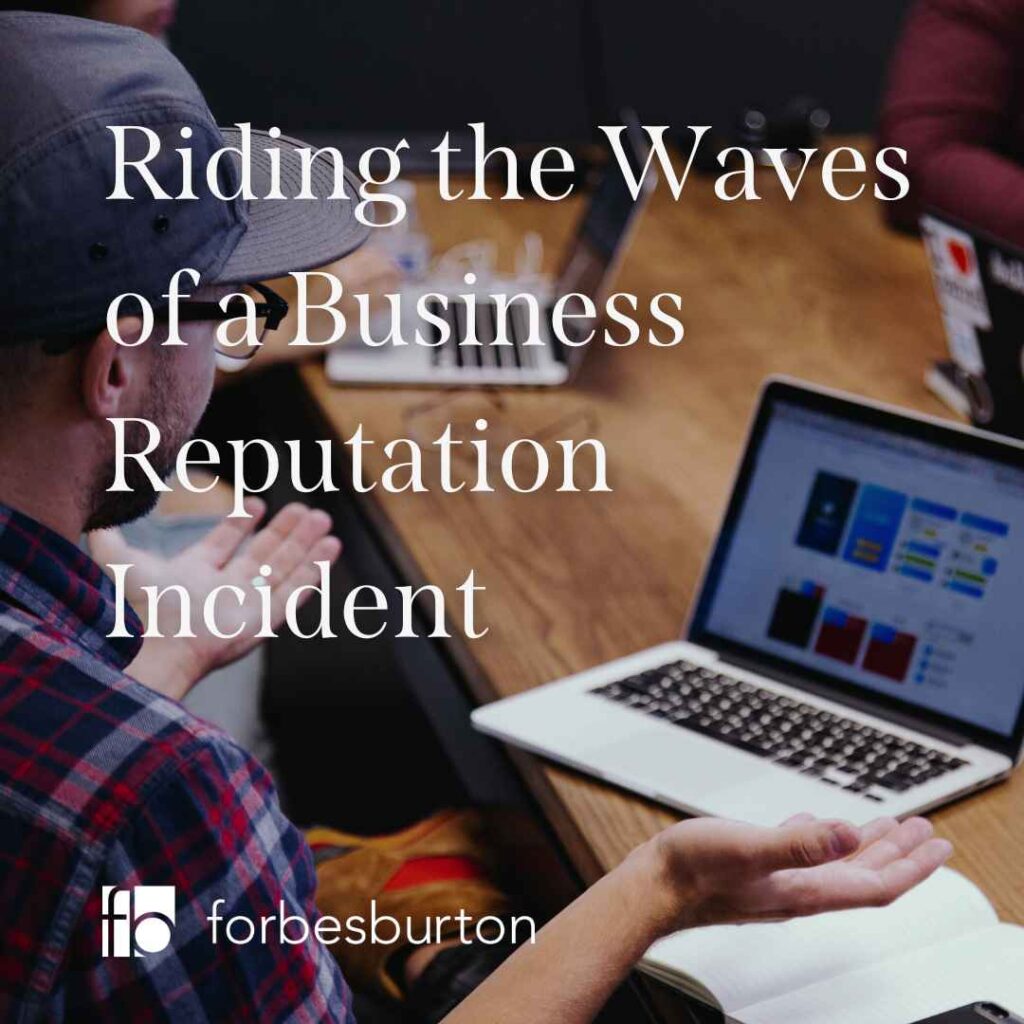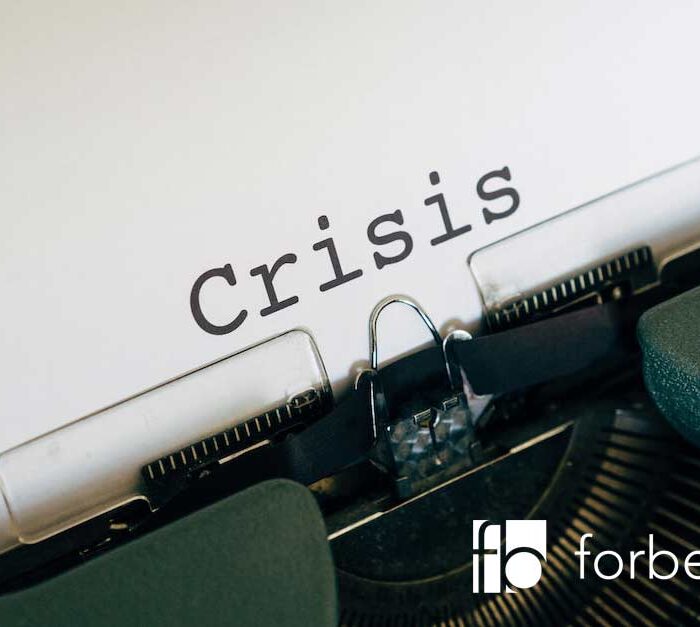
In 2019, a PwC survey revealed an alarming disconnect: 70% of business leaders had grappled with a crisis within the last five years, yet only 30% felt their teams were equipped to manage a crisis the next day.
Note the date of this survey – a year later they would all know what crisis management is about.
But that illustrates the point. When it comes to crisis management, you have to have eyes in the back of your head.
From economic and political risks to a global pandemic to fire, flood or earthquake, there are so many contingencies to prepare for it can seem like a thankless task to cover them all off. At least in 2020, we were all in the same boat, and there was no finger pointing.
That is not the case when a business is hit with a reputation incident. Not only is your business under fire, your competitors are quietly rubbing their hands with glee.
Reputation damage can kill a business
Warren Buffet said it takes 20 years to build a reputation and five minutes to ruin it.
35 years ago, Ratner’s was a successful retail chain that sold cheap jewellery. At an industry event at London’s Royal Albert Hall, CEO Gerald Ratner made a speech and joked about the “crap” quality of their products, saying a pair of earrings cost less than a sandwich, but the sandwich would last longer.
The next morning, it was all over the papers. “Ratner’s sells crap.” Ratner was fired as CEO and the brand never recovered. The interesting point here was one of perception. Everyone knew the products were second rate, but when you hear it from the lips of the CEO, who would dare to seem so cheap as to buy a loved one a gift from Ratner’s?
Not all reputational issues are the result of such ill-judged humour. Some arise from quality issues and product recalls, other from dubious practices such as the Volkswagen emissions issue or the Nike sweatshop scandal.
Establish a control group
When an incident like this hits, there is lots of information and misinformation from diverse sources. Assemble a control group. The persons or roles involved will depend on the nature of the incident, but will be likely to include representatives from PR, Quality, Compliance, possibly HR, probably Finance and perhaps Operations.
Get the facts together before you say anything
There is no value to anyone in discussing the incident externally till you are clear on it internally. Understand what happened, when and how.
Drawing a timeline makes it easier to understand and helps ensure you cover everything. If the incident is still playing out, then having a clear handle on the past makes it easier to take control of the narrative going forward.
Tie down the loose cannons
When you are ready, have a dedicated person who can respond to inquiries. All communication should be through this individual without exception. That means the general workforce should be instructed to avoid talking about it on social media, but so should the CEO.
When crypto exchange FTX collapsed earlier this year, it was essentially due to inadequate controls. But any brief hope that the business might be rescued by rival Binance was scuppered by FTX’s erstwhile CEO Sam Bankman-Fried, who took to Twitter with a sequence of rambling, profanity-filled messages.
Manage communication through a single channel
Communicate clearly and consistently through all channels. That includes social media.
Whether it is the sort of incident that involves a few upset clients on the phone or it’s something that’s got CNN and the BBC at your door, the approach is the same. But remember what we said earlier.
Say nothing till you know everything and control the narrative.
Re-establish the trust straight away
Ratners failed to rebuild the trust of its customers. The same happened to Arthur Anderson’s after the Enron scandal. Yet Nike bounced back from the sweatshop scandal, and Subway managed to get through the Jared Fogle debacle.
The difference was that Nike and Subway successfully demonstrated their commitment to the core values that had originally earned them the trust and their sincerity in being focused on correcting whatever went wrong.
Plan for the future and communicate your plan
Nike ensured Corporate Social Responsibility was pushed to the top of the agenda and redoubled its efforts in assessing suppliers and getting more involved in the supply chain with community initiatives in the areas close to its factories. It’s a great example as it is more than just words.
Author

Chris Leadley
chris.leadley@forbesburton.com
Related Articles
We're here for you.
As a dedicated team of Advisers and Consultants our aim is to help you fix the issues and solve the problems within your business.
Find out more →

